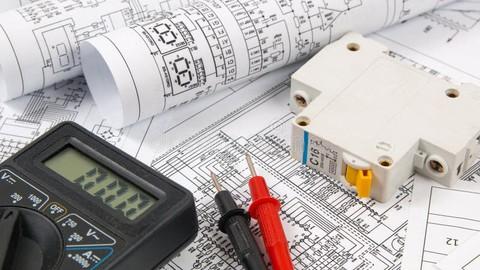1. Fundamentals of Electrical Circuits: Understand Ohm’s Law, Kirchoff’s Laws, and Thevenin’s Theorem to analyze and solve electrical circuits.
2. AC Circuit Analysis: Master the analysis of AC circuits with resistive, inductive, and capacitive components, calculating power and power factor.
3. Three-Phase Systems: Learn the principles of three-phase circuits, including connections, power measurement, and power factor correction.
4. Harmonics and Mitigation: Grasp the concept of harmonics, their effects, and strategies to mitigate harmonics in electrical systems.
5. Energy Measurement: Explore various energy measurement methods, including electromechanical, electronic, and smart energy meters.
6. HT and LT Distribution: Differentiate between high-tension (HT) and low-tension (LT) distribution systems and their applications.
7. Per Unit System Basics: Learn the concept of the per unit system and its importance in power system analysis.
8. Switchgear and Protection: Explore the role of switchgear in electrical systems and the importance of protection devices.
9. Distribution System Types: Understand radial, ring, and mesh distribution systems in electrical power networks.
10. Fault Current Calculation: Calculate three-phase fault current and MVA using per unit values for power system protection.
11. Types of Circuit Breakers: Understand various circuit breaker types, including air, vacuum, and SF6 circuit breakers.
12. Switchboard and Switchgear Assemblies: Learn about high and low voltage switchgear assemblies.
13. Protection Systems: Understand the purpose of protection systems and their components, including relays and transformers.
14. Protection Schemes: Explore protection schemes, including overcurrent, earth fault, and differential protection.
15. Transformer Basics: Learn about distribution transformers, their types, and protection methods.
16. Cable Joints and Terminations: Explore methods for joining and terminating cables in electrical installations.
17. Earthing Systems: Learn about substation and system earthing, including the role of earthing conductors and circuit protective conductors (CPC).
18. Cable Construction and Types: Understand the construction, insulation materials, and specifications of electrical cables.
19. Electrical Installation Design Sequence: Understanding steps in designing electrical installations, ensuring a systematic approach to the process.
20. Determine Load Characteristics: Analyzing and calculating electrical load requirements for installations, considering equipment and load diversity.
21. Determine Supply Characteristics: Identifying and assessing power supply characteristics, such as voltage levels, frequency, and reliability.
22. Electrical Installation Outline: Creating an initial plan for installations, detailing the placement of components, circuits, and connections.
23. Power Distribution Design: Planning the distribution of electrical power, addressing cable routing, conductor sizing, and selecting distribution equipment.
24. Use Standard Final Circuits: Incorporating standard final circuits into designs, ensuring compliance with relevant regulations and standards.
25. Isolation and Switching Requirements: Defining requirements for isolation and switching mechanisms, prioritizing safety and functionality.
26. Final Assessment and Client Review: Conducting a comprehensive evaluation of the design and reviewing it with the client for alignment.
27. Design calculations
28. Electrical design
29. Departure from Local Electrical Standards: Addressing deviations from local standards, documenting and justifying any departures appropriately.
30. Fault calculations
31. Cable sizing
32. Shock protection














